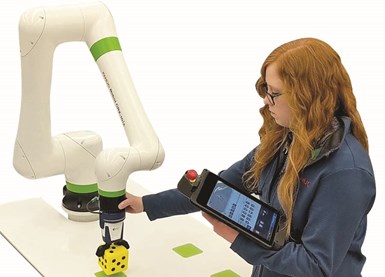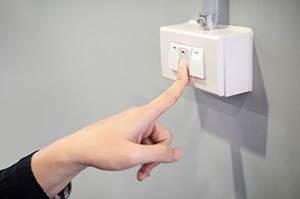Working Smarter, Not Harder
Geoff Dawson from PMPA member FANUC America talks about their history, how robots have enhanced the workspace and about their latest automation family.
PMPA: What is a brief history of FANUC America?
Geoff Dawson: FANUC Robotics was established in 1982 as a joint venture between General Motors and FANUC Corporation of Japan. In the early 1990s, FANUC Robotics became a wholly owned subsidiary of FANUC. In 2013, FANUC CNC and FANUC Robotics merged and became FANUC America Corporation. The company has three product families: robotics, Robomachines and CNC controls, and motors and motion platforms.
PMPA: How does FANUC serve the machine industry?
GD: Our focus for the machining industry is on automation and small machines that can serve high mix/low volume. High mix/low volume has always been there, but we are seeing a larger need. Our Robodrill (automated machining for more versatile milling, drilling and tapping) and Robonano (high precision and high accuracy) benefit the industry. And our controls too — 50% or more of the world’s machines have FANUC controls on them.
PMPA: How have you seen robots and automation affect the workforce?
GD: Today, robots and automation allow employees to run the equipment instead of doing the process by hand. The robots can do the dull and dirty jobs, while skilled employees manage the automation. For example, rather than actually doing the machine load/unload, an employee can operate several stations. Owners are looking at the efficiency pickup by putting automation in front of a machine, improving their spindle utilization and then giving the workforce a higher value job.
FANUC is focused on helping to create a skilled workforce through our certified education program where we work with colleges and high schools. Currently, FANUC works with over 1,000 educational institutions throughout the Americas, and that number is growing at a fast pace.
PMPA: What is the CRX robot family?

An operator teaches the CRX Collaborative Robot by guiding it manually.
GD: The CRX robot is our latest collaborative robot designed to make installing and programming robots easier than ever before. We have been offering collaborative robots for about six years. Collaborative robots move a little slower and have power and force limited safeguards in place so they can work side-by-side with a person. If the robots contact or run into something, they stop.
The real focus is ease-of-use. If there is a group of CNC operators, but they have never touched a robot, we want to make it as easy as possible for them to use a robot without having to know programming. Our CRX is a drag-and-drop program on the interface — when the operator wants to teach a point, it can be dragged and dropped on the time line. But they can also teach the robot by moving it to the position they want. We wanted to find a way to help smaller companies overcome any challenges related to integrating robots and automation. The CRX robot family is affordable and easy to integrate and use – all key factors for small shops looking to increase their competitive position in the market.
PMPA: What is QSSR?
GD: QSSR stands for Quick and Simple Startup to Robotization. That’s an interface to make it simple to connect a FANUC robot to a Robodrill or any FANUC CNC machine. It’s plug-and-play. The whole idea is to make it easy to use and easy-to-own for life.
PMPA: How does FANUC make it easy to own?
GD: We have a mantra that comes from the top and it’s “service first.” We service products for life — we don’t obsolete anything. As long as the owner has use for the machine, we will service it. It is really great to be part of a company that feels that way.
PMPA: Why do you value your PMPA membership?
GD: Our membership allows us to keep up with industry trends and better understand what our customers want and need. Our goal is to help people solve their problems and PMPA allows us to do that. It makes us a better company.
Related Content
Unattended Production Takes More Than the Most Capable CNC Machine
Process planning and reliable peripherals are key to successful lights-out manufacturing.
Read More4 Bright Ideas for Effective Lights-Out Machining
Adopting lights-out machining involves considerations when a machine shop decides to move forward with the process. Here are some tips to a successful implementation.
Read MoreAutomation Idea for Halloween?
Maybe not. But, the candy-throwing robots at MetalQuest’s Nebraska facility do enable the contract machine shop to stand out at career fairs and similar events.
Read MoreReinventing the Wheel with Robot-Automated CNC Multitasking
One race team discovers how to efficiently manufacture a new wheel nut design for the next-generation NASCAR stock car with the help of a CNC mill/turn and a built-in robot.
Read MoreRead Next
A Tooling Workshop Worth a Visit
Marubeni Citizen-Cincom’s tooling and accessory workshop offers a chance to learn more about ancillary devices that can boost machining efficiency and capability.
Read More5 Aspects of PMTS I Appreciate
The three-day edition of the 2025 Precision Machining Technology Show kicks off at the start of April. I’ll be there, and here are some reasons why.
Read MoreDo You Have Single Points of Failure?
Plans need to be in place before a catastrophic event occurs.
Read More













.jpg;maxWidth=300;quality=90)







.jpg;maxWidth=970;quality=90)